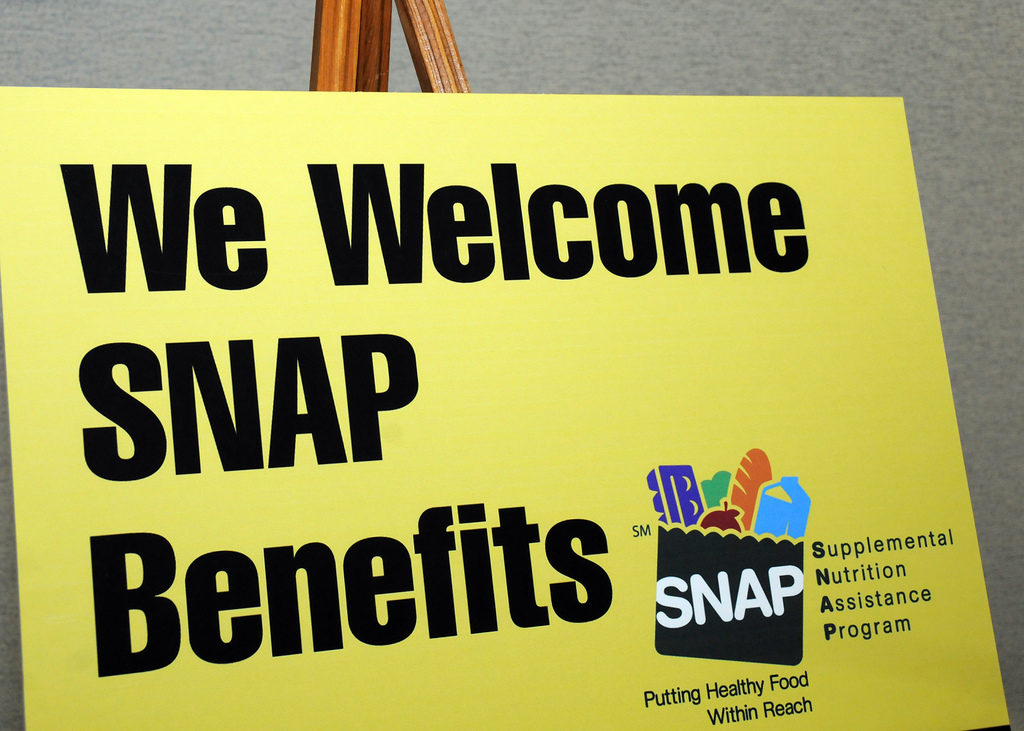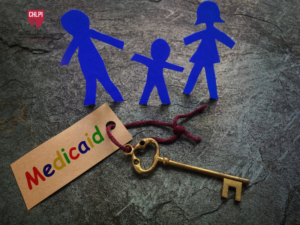Written by Jane Jeong, student in the Food Law and Policy Clinic, Fall 2017.
SNAP is already the nation’s “most effective” economic stimulus program.
The political battle over the 2018 Farm Bill is already well underway and—if rhetoric from the Trump Administration is any indication—it won’t be an easy fight. Threatening to gut $192 billion from SNAP over the next decade, the White House is proposing an unrecognizable overhaul of a program that services the fundamental needs of 42 million Americans every single day.

 The Supplemental Nutrition Assistance Program (SNAP) has been called the “most effective” economic stimulus program in the United States.
The Supplemental Nutrition Assistance Program (SNAP) has been called the “most effective” economic stimulus program in the United States.
I will be the first to admit that SNAP is not perfect; no government assistance program is. But it is by far the best option we have as our nation’s first line of defense against hunger. Among all SNAP recipients, approximately half are children and 90 percent are African American. Approximately 75% of SNAP recipients receive benefits for a year or less. It is often the only form of income assistance that struggling households receive from the federal government. SNAP is even considered the federal government’s “most effective” economic stimulus program, boosting the economy by $1.73 for every $1.00 of benefits spent.
Under the current political climate, several proposals have been made to change the nature and scope of SNAP in order to reduce participation rates. Common attacks on the program typically center on its structure as an entitlement program and on scandalizing incidents involving fraud or error. I will address these common attacks in turn.
We should preserve SNAP as an entitlement program, simply because that is the best structure to retain its flexibility in times of unexpected economic need.
As an entitlement program, SNAP is flexible: It currently guarantees benefits to eligible individuals and households who meet a certain set of defined qualifications. This structure allows enrollment to fluctuate quickly in response to changes in economic circumstances at the individual, household, or societal level. By nature, entitlement programs are countercyclical; SNAP enrollment increases during recessions (when more families face the burdens of poverty) and decreases during recoveries (which is what has actually happened since the 2007 financial crisis). The flexibility of SNAP as an entitlement program also allows the program to support communities that are suddenly affected by crisis, such as the water crisis in Flint, Michigan, among other disasters.
Currently, the federal government pays the full cost of SNAP benefits and splits administrative costs with all 50 states that operate the program. In fiscal year 2015, the federal government spent approximately $75 billion on SNAP, of which 93% went directly to households for food purchases. Along with the Trump Administration, Republican budget proposals have consistently proposed converting SNAP into an annual “block grant” disbursement—which would provide a lump sum of funds for each state to administer SNAP on its own—alongside $125 to $192 billion in overall cuts to the program.
Block grant proposals are not unique to SNAP, and it is therefore worth exploring the following reasons most commonly referenced in support of such a structural shift. First, proponents claim that block grants are more efficient than entitlement programs, as they reduce reporting requirements to the federal government and provide local decision-makers more decision-making flexibility. However, states already have significant discretion in administering SNAP under the current structure—including decisions over statewide eligibility criteria, work requirements, and extent of coordination with other government programs. Furthermore, federal oversight ensures an additional layer of accountability for states to run efficient and transparent processes.
Second, some legislators support block grants because they offer a cheaper alternative. By design, block grants are instruments that decentralize the government and slash federal spending. By allocating a finite budget to a state for a particular program, the federal government effectively can cap its own spending (since the state would be responsible for any additional gaps in funds). But this would be a particularly disastrous result for SNAP recipients living in states with budget shortfalls, since it is not uncommon for states to divert money to fulfill other budgetary gaps under block grant programs.
Such proposed changes in structure make even less sense when considering the overall goal of SNAP: to serve as the nation’s foremost safety net. Inherent in this goal is the need to remain responsive to changes in economic conditions—including sudden job losses and natural disaster relief. Under the current entitlement structure, eligible individuals typically receive benefits within 30 days of applying and, in some emergencies, can receive benefits in as little as seven days. Benefits last only as long as they are needed; recipients must reapply for benefits every 6 to 12 months and report any changes in income or economic circumstances.
Such flexibility has been proven to work. For instance, when unemployment increased 93% during the latest financial crisis from 2007 to 2011, SNAP participation grew by 70% over the same period as more families needed help with food purchases. Once the economy recovered and unemployment rate fell in 2014, SNAP participation and spending began falling with it. This is precisely why SNAP spending as a share of GDP has actually been decreasing and is projected to fall further; as the economy improves, the Congressional Budget Office projects that the number of participants will fall by 2 to 4 percent each year over the next ten years, from 45.8 million in fiscal year 2015 to 33.1 million by 2026. Such quick responsiveness to real-time need is possible only because of the program’s current entitlement structure, which is essential for SNAP to serve as the nation’s foremost safety net.
SNAP is not a program rife with fraud or waste; in fact, SNAP has one of the lowest error rates among government programs.
Much public opposition to SNAP is the result of unrepresentative but politically powerful anecdotes about over-enrollment, fraud, and abuses in the program. These stories paint SNAP as inefficient or riddled with free-riders who are too lazy to find jobs. The reality, however, is that fraud and error are far less rampant in SNAP than in any other large government program. For instance, improper payment rates for Medicare and Medicaid totaled 10.1% and 8.1%, respectively, in 2013. By contrast, SNAP error rates ranged from 3% to 4% around the same time. These low error rates are likely attributed to SNAP’s quality control program, which is largely considered one of the most rigorous payment error measurement systems of any public benefit program. For instance, when Congress enacted the Improper Payments Act in the early 2000s to reduce improper payments by federal agencies, SNAP was among the few programs that had already met the newly imposed standards.
In addition to low rates of erroneous payments, incidents of household fraud (intentional misrepresentation of eligibility) and underground trafficking (the sale of SNAP benefits for cash) are similarly low and collectively account for an estimated 1.3% of the total food stamp program per year. Trafficking rates have gone down significantly since EBT cards requiring pin numbers were introduced. With these purchase cards, computer programs can easily monitor SNAP transactions for patterns that suggest abuse on behalf of enforcement agencies.
The USDA has reported declines in the rate of trafficking from 4% to 1% of SNAP benefits over the last 15 years as a result of such programs, and the Department has actively taken steps to further improve program integrity—particularly among small- to mid-sized retailers. Although 82% of all benefits are redeemed at larger supermarkets (which have an estimated <1% rate of trafficking), small- and medium-sized retailers account for an estimated 85% of all trafficked redemptions. In response, the USDA has increased data mining and investments in software that track recipients who seek replacement EBT cards frequently and stores that report unusually high EBT sales.
Don’t gut SNAP; strengthen and defend it.
In sum, instead of gutting the program—which would untangle years of progress and, more importantly, leave millions of Americans at much greater risk of poverty—Congress should focus on replicating its success and building on the strides already made in the fight against domestic hunger. The 2018 Farm Bill is a real opportunity to build on the progress SNAP has already made for millions of Americans facing unemployment and poverty, and defending our nation’s best safety net is simply the best way forward against the backdrop of current economic realities and realistic nutritional needs.


